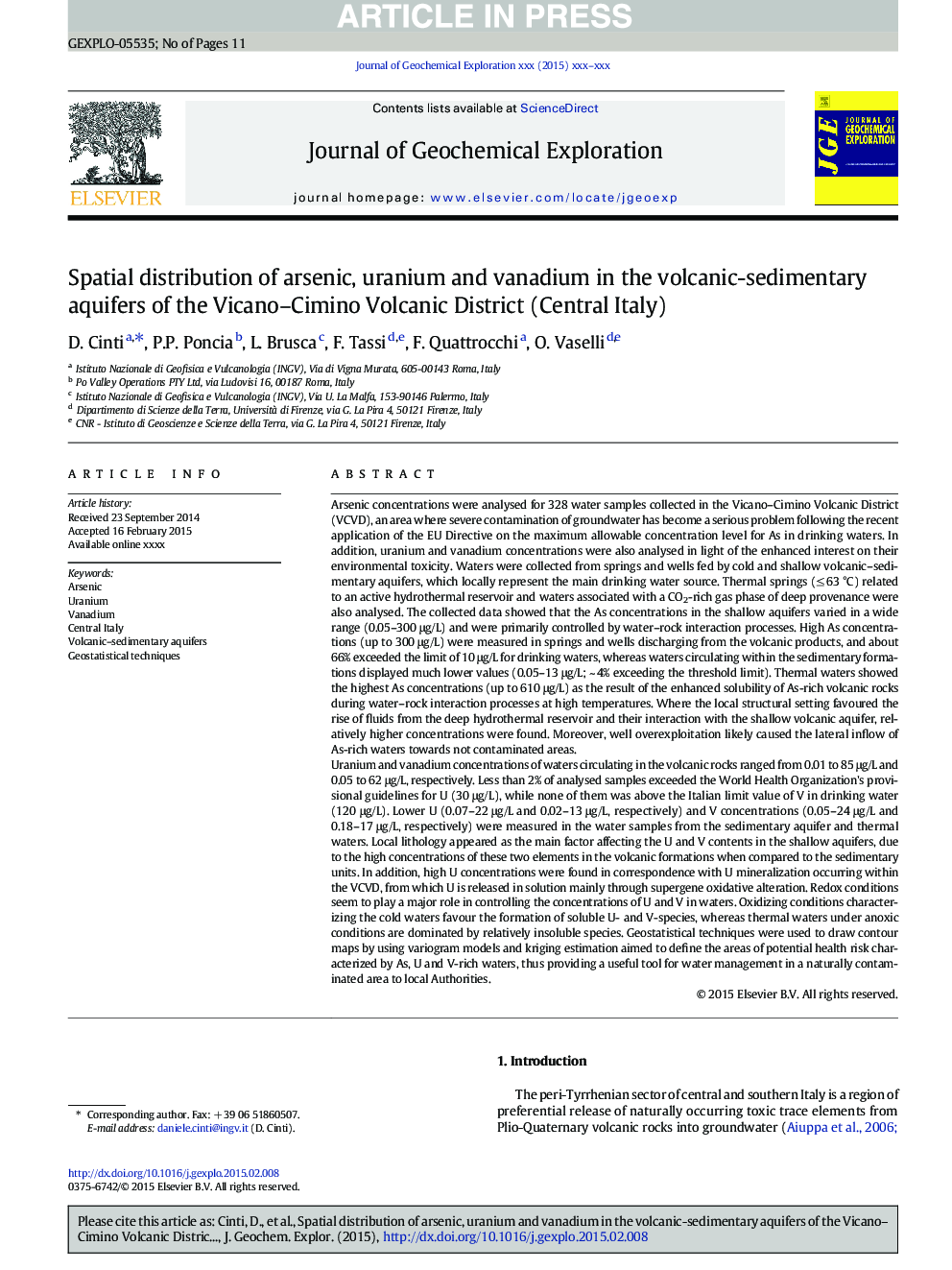| Article ID | Journal | Published Year | Pages | File Type |
|---|---|---|---|---|
| 6344631 | Journal of Geochemical Exploration | 2015 | 11 Pages |
Abstract
Uranium and vanadium concentrations of waters circulating in the volcanic rocks ranged from 0.01 to 85 μg/L and 0.05 to 62 μg/L, respectively. Less than 2% of analysed samples exceeded the World Health Organization's provisional guidelines for U (30 μg/L), while none of them was above the Italian limit value of V in drinking water (120 μg/L). Lower U (0.07-22 μg/L and 0.02-13 μg/L, respectively) and V concentrations (0.05-24 μg/L and 0.18-17 μg/L, respectively) were measured in the water samples from the sedimentary aquifer and thermal waters. Local lithology appeared as the main factor affecting the U and V contents in the shallow aquifers, due to the high concentrations of these two elements in the volcanic formations when compared to the sedimentary units. In addition, high U concentrations were found in correspondence with U mineralization occurring within the VCVD, from which U is released in solution mainly through supergene oxidative alteration. Redox conditions seem to play a major role in controlling the concentrations of U and V in waters. Oxidizing conditions characterizing the cold waters favour the formation of soluble U- and V-species, whereas thermal waters under anoxic conditions are dominated by relatively insoluble species. Geostatistical techniques were used to draw contour maps by using variogram models and kriging estimation aimed to define the areas of potential health risk characterized by As, U and V-rich waters, thus providing a useful tool for water management in a naturally contaminated area to local Authorities.
Related Topics
Physical Sciences and Engineering
Earth and Planetary Sciences
Economic Geology
Authors
D. Cinti, P.P. Poncia, L. Brusca, F. Tassi, F. Quattrocchi, O. Vaselli,
